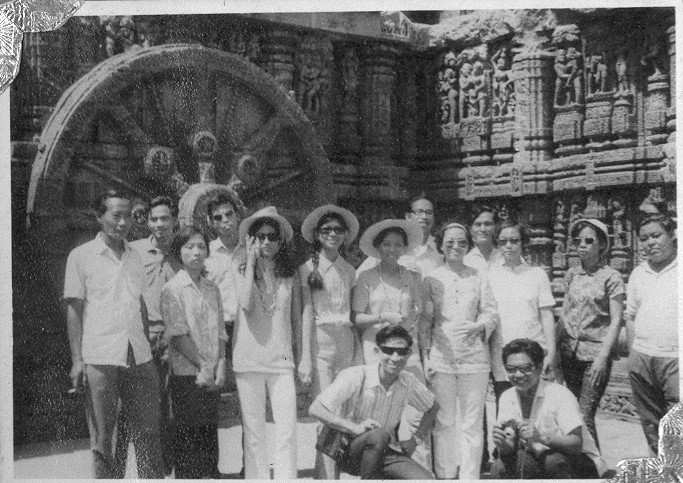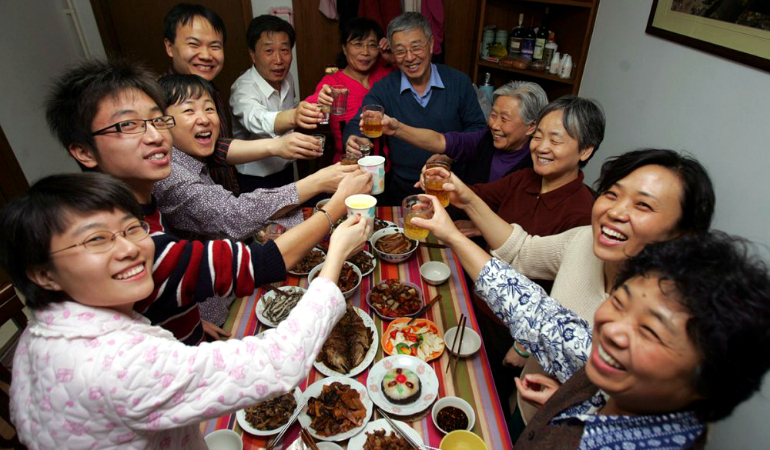Who are Desi Chinese?
- Admin
- Aug 30, 2020
- 6 min read
Updated: Oct 7, 2020
Who are Desi Chinese?
Desi Chinese are Indians of Chinese ancestry whose ancestors came to India hundreds of years ago and settled here. Their children and the children after them were born in India and we are calling them here as Desi Chinese or Indian Chinese. In academic terms, Indians of Chinese origin would be known as Chinese-Indians, but we have purposely reversed the term to call ourselves Indian-Chinese in order to first emphasize our feeling of being Indians followed by our Chinese heritage and history.
The First Settlers
While there have always been famous pilgrims and travellers from China who visited and stayed in India for extensive periods of time such as Hieun Tsang and Fa Hien, the establishment of Chinese settlements and a community in India can be traced to the 18th and 19th century. This was the period before the consolidation of nation states and national boundaries and in the colonial period there was a lot of movement of people propelled by the demand for labour and the quest for economic opportunities. Indians for instance were transported to the Caribbean and Southeast Asia as indentured labourers and similarly a large number of Chinese moved to Southeast Asia, and some of them found their way to parts of South Asia.

Not that there were no settlers before that, but the first recorded settler to India was a Chinese merchant called Yong Atchew, 240 years ago. In 1780, Warren Hastings (the then Governor General of India) gave Atchew 650 bighas of land to start a sugar mill in Budge Budge, 40 kms from erstwhile Calcutta. He brought indentured labourers from China, grew sugarcane and was quite successful in manufacturing sugar. But it was all not all smooth sailing for Atchew in India. Archival records show that in a letter in 1781, a year after he landed, Atchew while praising and thanking the British government for their "kind protection and encouragement" also lodges a complaint. Atchew complains about his fellow countrymen, the Chinese deserters from the ships who remain in Calcutta with no subsistence, and accuses them of inducing away his indentured laborers.
This, he says has caused him immense losses and he seeks the help of the government in punishing these "vagrants" and recovering his labourers. But he is not too successful. Atchew dies and the sugar mill closes after three years of his arrival. The legend of Atchew is probably how the word “cheeni” is used for sugar in many parts of India and the place where he was buried and his grave can still be found, is called Atchipur near Kolkata. Yong Atchew is regarded by Indian Chinese as their first ancestor in India and once a year, usually in the weekend following Chinese New Year, Desi Chinese families - especially those settled in or visiting Kolkata for New Year - make a pilgrimage to Atchipur to offer their prayers at Atchew's grave and temple. The lion dance troupes go to seek blessings from the ancients and perform for the families gathered there and the oracles are consulted by visiting families. They remember and connect to their history and ancestry.
The Three Waves of Migration to India
First Wave: Traders & Skilled Workmen in the 18th & 19th centuries
Apart from the Chinese workers whom Atchew brought to India and who settled here, Calcutta and Mumbai being port cities received many other sailors, merchants and skilled workmen from China too. The sailors, including the ship-deserting “vagrants” that Atchew complains to the British government about, were a drifting lot but some of them started staying for long periods in India. Traders came to trade in silk, spices, tea and other commodities. But a larger group who came to India in the 19th century were skilled craftsmen like carpenters who came in search of better opportunities to India.

These carpenters would go on to help build India’s shipyards in Bombay & Calcutta and also the railways, largely the interiors of the coaches and also the wooden railway sleepers. Then, almost every tea garden in West Bengal and Assam had Chinese carpenters building the beautiful wooden bungalows, worker’s quarters and even the tea boxes used to export Indian tea to other parts of the world. In fact, the first tea garden in Assam called Cinnamara in Jorhat started in 1850, is believed by locals to have been so named because Chinese carpenters (the cheena) hammered the first tea-boxes for transporting the tea (cheena-ne-mara).

Following the carpenters also came different skilled workers to India – traditional dentists, paper flower makers, shoemakers and launderers. Most of them first came to Calcutta which became the hub for receiving the new migrants. Some of them then chose to move on to other places in India, to work and to trade. Apart from Kolkata with the biggest concentration , Desi Chinese can also be found in Mumbai, Delhi, Chennai, Bangalore, Hyderabad. In fact, not just in the bigger metros but Indian Chinese dentists, shoemakers and later restaurants and beauty parlours can be found in smaller towns like Kanpur, Patna, Jamshedpur, Allahabad, Gorakhpur, Bhubaneshwar, Siliguri etc.
Second Wave: Temporary Refugees in the first half of the 20th century
If entrepreneurship and the search for better livelihoods was the driving force of the first wave of migrants - wars, famine, hunger and survival stress in China at the turn of the 20th Century drove the second wave of migrants to India. Many, with or without their families, escaped the harsh conditions back home to places around the world. Thus, the beginning of the 20th century saw the arrival of many women, children and shelter-seekers from China. It was also the time of the world wars and few passenger ships plied the seas. So, the shelter seekers tried to survive till conditions got better to return to their country. The largely male-centric Chinese community of Kolkata with its all-male workmen clubs, the all-male dormitories and work suited only for men was ill-prepared for the families who came at the wake of war. Thus, the initial years were not easy for the new immigrants and they barely managed to feed themselves.

Third Wave: Settlement in India
World War II ended in 1945 but the shelter-seekers in India watched with horror as China after winning the eight-year-long devastating war against Japan, plunged into civil war. For four years, the Communist and the Nationalist armies fought and in 1949, the Communists took control and rang down the iron curtain on the country. There was no going back and the Chinese in India started settling down. Many married local Indian women, started families and settled here. They were organised around their district of origin, dialect and also occupational specialisations. Those from Canton District i.e. the Cantonese were mainly carpenters and cooks, the Hakka speaking people were the shoemakers, those from Hubei Province were the dentists and paper flower makers, the Shanghai people were the launderers and the numerically much smaller people from the Shandong Mountains traded in silk and so on. Leather tanning and hair-dressing were the trades the Chinese settlers in India could get into because of social stigma attached to such professions in India. Then, in a modernising India of the 1970 & 1980’s, restaurants became another business that the Indian-Chinese families found their niche.
In Calcutta, Indian Chinese clustered largely around two separate geographic areas in the city. Cheenpada or the old Chinatown is in Central Calcutta area around Burra Bazaar, Dharamtola and Bowbazaar. The other one called Tangra or the new Chinatown is beside the eastern Metropolitan Bypass.
The Desi Chinese in 2020
At its peak in the 1950’s & 1960’s, Indian Chinese numbered around 50,000 in India. With the older generations having passed on and the younger generations migrated out of India for better livelihoods, the numbers have dwindled. Today, there are less than 3,000-4,000 Desi Chinese, of which around 1,500-2,000 live in Kolkata. The new generation of Desi Chinese unlike their ancestors are better educated, qualified and many hold professional jobs. Spread across different parts of India, they are software professionals, doctors, dentists, university teachers, social workers, qualified hoteliers etc. Many now choose to marry outside their community and live in multi-generational families. It is also common to find Desi Chinese households being multi-religious and multi-lingual and among the senior citizens belonging to originally different dialect groups and regions of China, Hindi remains the lingua franca. Youngsters love their Hindi movies, chaat and IPL matches. The Desi Chinese of today is uniquely desi-with-a-Chinese-face.







